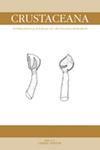在用于饲养太平洋白对虾(Litopenaeus vannamei)(十足目,斛形目)的零水交换系统中共同养殖大型藻类(乳莼)对生物絮团成分的影响
IF 0.6
4区 生物学
Q4 MARINE & FRESHWATER BIOLOGY
引用次数: 0
摘要
在封闭或零换水的温室水产养殖系统中,本研究考察了单养和共养南美白对虾(300只/立方米)与大型藻类莼菜(不同密度的莼菜(1、2和3克/升))中聚集的絮团之间的相互作用。研究是在零水交换条件下进行的。比较了不同处理组积累的絮状物:无莼菜组(处理对照组)、莼菜密度为 1 克/升的处理组(T1:处理 1)、莼菜密度为 2 克/升的处理组(T2:处理 2)和莼菜密度为 3 克/升的处理组(T3:处理 3)。最终确定,在 35 天的实验期内,使用 Biofloc 系统养殖莼菜实际上有助于确保零换水养殖系统中的水质,降低了蓝藻密度,而蓝藻密度会导致水产养殖系统中有毒藻类大量繁殖。据解释,这是因为莼菜是一种天然的生物修复剂。本文章由计算机程序翻译,如有差异,请以英文原文为准。
Impact of the co-cultivation of macroalgae (Ulva lactuca f. fasciata) on the composition of biofloc in a zero water exchange system used for rearing Pacific white shrimp (Litopenaeus vannamei) (Decapoda, Dendrobranchiata)
In a closed, or zero water exchange, greenhouse aquaculture system, this study examined the interaction between the aggregation flocs in the mono- and co-cultivation of Pasific white shrimp, Litopenaeus vannamei (300 individuals/m3) with macroalgae, Ulva lactuca f. fasciata at different densities of Ulva (1, 2 and 3 g/l). The investigation was conducted under zero water exchange conditions. The accumulated flocs were compared between the various treatment groups: without Ulva (Treatment Control Group), Ulva at 1 g/l density (T1: Treatment 1), Ulva at 2 g/l (T2: Treatment 2), and Ulva at 3 g/l (T3: Treatment 3). Ultimately, it was determined that Ulva cultivation using the Biofloc system actually helped to ensure the water quality in the zero water exchange culture system during the 35-day experimental period with reduced cyanophyte densities, that can cause toxic algal blooms in aquaculture systems. This was interpreted to result from the fact that Ulva is a naturally occurring bioremediation agent.
求助全文
通过发布文献求助,成功后即可免费获取论文全文。
去求助
来源期刊

Crustaceana
生物-海洋与淡水生物学
CiteScore
1.30
自引率
33.30%
发文量
52
审稿时长
3 months
期刊介绍:
Crustaceana is a leading journal in the world on crustacean research, including the latest papers from all branches of zoology. It provides up-to-date information on aspects such as taxonomy, zoogeography, ecology, physiology, anatomy, genetics, palaeontology, and biometry, and covers all groups of Crustacea. Boasting a large international circulation, Crustaceana provides its readers with an abstract for each article.
 求助内容:
求助内容: 应助结果提醒方式:
应助结果提醒方式:


